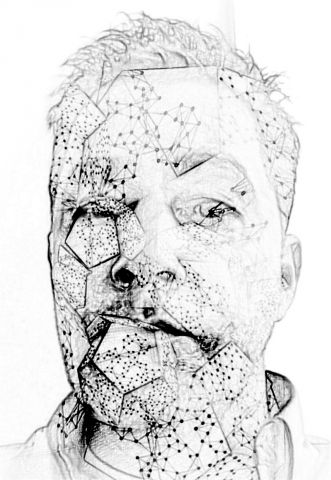I have a rare opportunity tomorrow to try out some of my ideas in an establishment where I’m not known; where the pupils are new to me – as is the idea of working with iPads. My brother is Deputy Head in a school the other side of the country to me, and his Art department is about to implement iPad technology into some of their lessons. I am going in as a visiting artist/teacher for the day, and will be working with 28, GCSE Art and Design pupils and the Art department staff, specifically on iPads… very exciting… this the first time I venture out to try and make use of the learning I did for my Masters… the first time I have done a residency outside of my own department…
I have planned well… I know what I’m going to do with them… stencil cuts… portraiture… artist links… spray paint… video… mirror boxing… projector-ing… apps-ing… and then freedom for development so that hopefully I learn something to…
…I know I will learn…
My intention is to connect conventional practice with contemporary technology in a bid to amalgamate the work so it is difficult to determine which is the hand of the machine or that of the artist. The iPads will be used as development tools, not canvas’, yet work will be initiated and originate from them also.
The last essay I wrote for my Masters discussed the integration of iPad technology into Art education, but I was criticized for not presenting enough of a difference between what I was proposing and work created within Photoshop. I presented no examples to my assessors and ultimately I concede that they were right in their summations. Here I have a possibility of correcting that view. I am so grateful to the department for inviting me; I suspect that I will probably instigate some form of excitement that may cause issues when I have left… some of what I’m going to do has been “tested” on my own pupils… but isn’t that the point? Should I not be going there to create an atmosphere for “more”? And if I can trigger that in the staff also… I’ll be well worth the money!
I will show examples of what is created…
Is this beginning to sound arrogant? I pray not. Its opportunity… excitement… privilege… occasion…
I shall report further…










